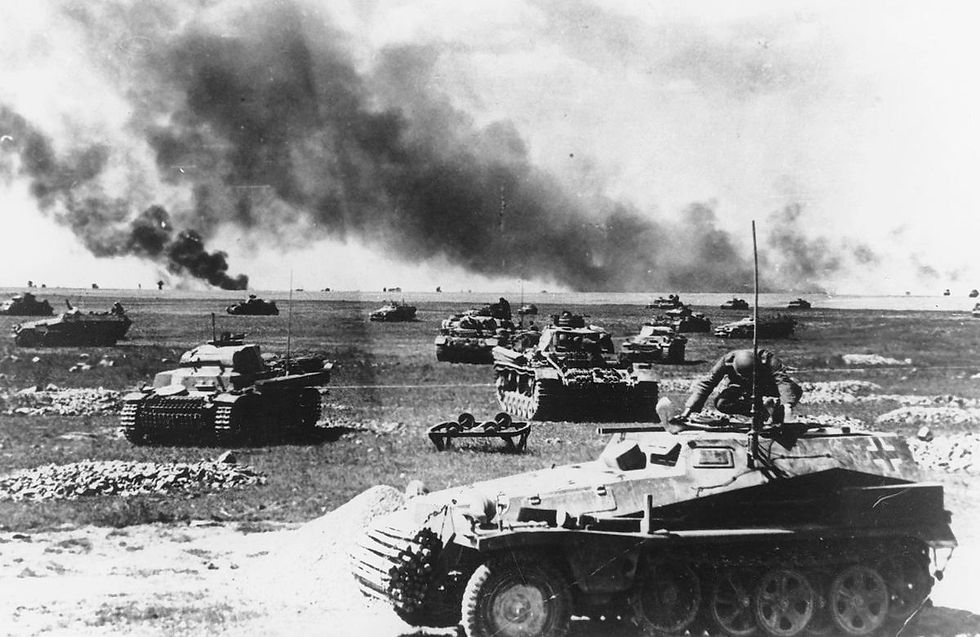Dispelling Some Myths: ‘Blitzkrieg’ was a ‘thing’
- Tastes Of History
- Dec 20, 2022
- 3 min read
Updated: Mar 4

‘Blitzkrieg’ is a compound of two German words whose literal translation means ‘lightning war’ [1]. Military historians have defined ‘Blitzkrieg’ as the employment of the concepts of manoeuvre and combined arms warfare developed in Germany during both the interwar period and the Second World War. The problem is that the word did not enter official terminology of the Wehrmacht either before or during the war. Indeed, pre-war use of the term is rare. Karl-Heinz Frieser researched the origin of the term for his book 'Blitzkrieg Legende' and found only two examples:
The military Journal ‘Deutsche Wehr’ of 1935 used the term in an article on how states with insufficient food and raw materials supply can win a war.
Three years later the ‘Militär-Wochenblatt’ of 1938 defined ‘Blitzkrieg’ as a ‘strategic attack’ carried out by operational use of tanks, air force, and airborne troops.
It is true, however, that during the interwar period aircraft and tank technologies had matured and were thus combined with systematic application of the traditional German tactic of Bewegungskrieg (manoeuvre warfare), deep penetration of enemy lines, and the bypassing of enemy strong points to encircle and destroy enemy forces in a Kesselschlacht (‘cauldron battle’). Strategically, the intention was to swiftly effect an adversary's collapse through a short campaign fought by a small, professional army. Operationally, its goal was to use indirect means, such as mobility and shock, to render an adversary's plans irrelevant or impractical. To do this, self-propelled formations of tanks; motorised infantry, engineers, artillery, and ground-attack aircraft operated as a combined-arms unit.
In English It was first popularised in the English-speaking world by the American news magazine Time describing this form of armoured warfare during the German invasion of Poland. Published on September 25th, 1939, well into the campaign, the account reads:
‘The battlefront got lost, and with it the illusion that there had ever been a battlefront. For this was no war of occupation, but a war of quick penetration and obliteration - Blitzkrieg, lightning war. Swift columns of tanks and armored trucks had plunged through Poland while bombs raining from the sky heralded their coming. They had sawed off communications, destroyed animals, scattered civilians, spread terror. Working sometimes 30 miles (50 km) ahead of infantry and artillery, they had broken down the Polish defenses before they had time to organize. Then, while the infantry mopped up, they had moved on, to strike again far behind what had been called the front.’

A year later, the term had gained popular traction in the Western media to describe the highly successful German manoeuvre operations in the campaigns of 1939-1941 where ‘Blitzkrieg’ capitalized on surprise penetrations of enemy defences (the penetration of the Ardennes Forest region for example), the Allies’ general unpreparedness, and the latter’s inability to match the pace of the German attack.
Despite its common usage by journalists, including in German wartime propaganda itself, the word ‘Blitzkrieg’ was never used by the Wehrmacht [2] as an official military term and was never officially adopted as a concept or doctrine. According to David Reynolds, ‘Hitler himself called the term Blitzkrieg 'A completely idiotic word' (ein ganz blödsinniges Wort)". Johann Adolf von Kielmansegg, a senior officer in the Heer (army), even disputed the idea that it was a military concept. General Kielmansegg asserted that what many regarded as ‘Blitzkrieg’ was nothing more than ‘ad hoc solutions that simply popped out of the prevailing situation’. The Wehrmacht were better trained and motivated to combine Bewegungskrieg (manoeuvre warfare) with Auftragstaktik, in which the commander expressed his goals to subordinates and gave them discretion in how to achieve them. In simple terms, much more authority was delegated to local commanders enabling them to make speedy, executive decisions and thereby increasing the tempo of operations and wrong-footing the enemy.
Popular usage ‘Blitzkrieg’ has since expanded into multiple meanings in more popular usage. From its original military definition, ‘blitzkrieg’ may be applied to any military operation emphasizing the surprise, speed, or concentration stressed in accounts of the Invasion of Poland. During the war, the Luftwaffe terror bombings of London came to be known as ‘The Blitz’. Similarly, ‘blitz’ has come to describe the rush tactic of American football, the form of chess in which players are allotted very little time and, in law enforcement, a type of fast, ruthless attack on the person.

Endnotes:
1. ‘Blitz’ in German means ‘flash, lightening or thunderbolt’, while ‘krieg’ means ‘war’. ▲
2. The Wehrmacht was the name given to the unified armed forces of Nazi Germany from 1935 to 1945. The Wehrmacht consisted of the Heer (army), the Kriegsmarine (navy) and the Luftwaffe (air force). ▲


Comentarios